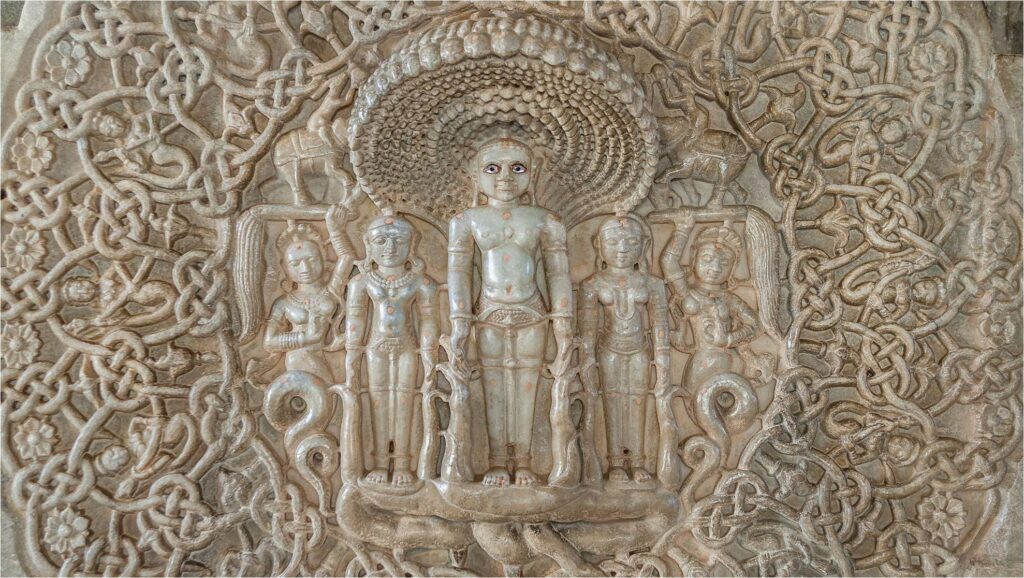
CAUSES OF ORIGIN
The Vedic philosophy had lost its original purity. ·
The Vedic religion had become very complex and degenerated into superstitions, dogmas, and rituals.
Supremacy of the Brahmans created unrest in the society and Kshatriya reacted against the Brahmanical domination.
Introduction of a new agricultural economy in eastern India.
The desire of Vaishyas to improve their social position with the increase in their economic position due to the growth of trade.
In Agriculture
Required cattle, but they were being killed in rituals and sacrifices on a large scale
Both new religions were not biased towards any varna system •
Both Preached non-violence, which would put an end to the war between kingdoms ,consequently promoting trade & commerce
CAUSES OF ORIGIN – Economical Development of Vaishyas
Many cities came up in lower Gangetic plains during later Vedic times – Rajgir, Benares ,Kushinagar ,Chirand •
Earliest coins belonged to 500 BC & are known as punch marked coins, 1st used by Vaishyas / Traders. •
Coins facilitated trade & commerce, which added to importance of Vaishyas •
They were placed 3rd in hierarchy and wanted to improve their place in society hence extended generous support to Buddhism & Jainism
CAUSES OF ORIGIN – The Appeal for a Simple Life
With trade came prosperity and economic inequality entered society •
New religions called for older and simpler ascetic ideals like old Vedic times – mass appeal to all other people who were not prosperous
JAINISM
Jainism is an ancient religion that is rooted in the philosophy that teaches the way to liberation and a path to spiritual purity and enlightenment through disciplined nonviolence to all living creatures.
Jainism is a non-Brahminical religion, founded as a result of the revolt against the Brahmanism of the sixth century BC. Some sources place Jainism as one of the oldest religions, belonging to the era of Rig Veda. Jainism rejects the Vedas and condemns the varna system. It believed in Thirtankaras and rejects the existence of God as a Paramatma.
Jainism is an ancient religion that is rooted in the philosophy that teaches the way to liberation and a path to spiritual purity and enlightenment through disciplined nonviolence to all living creatures.
ORIGIN OF JAINISM
Jainism came into prominence in 6 century B.C., when Lord Mahavira propagated the religion.
There were 24 great teachers, the last of whom was Lord Mahavira.
These twenty-four teachers were called Tirthankaras-people who had attained all knowledge (Moksha) while living and preached it to the people.
The first Tirthankara of Jainism was Rishabnatha.
He is also known as Ādinātha which translates into “First (Adi) Lord (nātha)”, as well as Adishvara (first Jina), Yugadideva (first deva of the yuga), Prathamarajeshwara (first God-king), and Nabheya (son of Nabhi)
After his renunciation, the legends state Rishabhanatha travelled without food for an entire year. The day on which he got his first ahara (food) is celebrated by Jains as Akshaya Tritiya.
Neminatha, also known as Nemi and Arishtanemi, is the twenty-second tirthankara in Jainism.
Parshvanatha (Pārśvanātha), also known as Parasnath, was the 23rd of 24 Tirthankara’s of Jainism. He is the only Tirthankara who gained the title of Kalīkālkalpataru (Kalpavriksha in this Kali Yuga).
Life of Mahavira
- Vardhamana ‘Mahavir’ – 24th Trithankar
- Born in Kundagram –Vaishali 599/582/540 BC*
- Father – Siddhartha , head of a Kshatriya clan- Jnatrika •
- Mother – Trishala , sister of Lichavi chief

At the age of 30 years, he renounced his home and become an ascetic.
He practised austerity for 12 years and attained the highest spiritual knowledge called Kaivalya (i.e conquered misery and happiness) at the age of 42 years.
A symbol was associated with every Tirthankara and Mahavira’s symbol was a lion.
His missions took him Koshala, Magadha, Mithila, Champa etc
He passed away at the age of 72 in 468 B.C. at the Pavapuri in Bihar.
Doctrine of Jainism
Belief in God: Jainism recognised the existence of god but placed them lower than Jina (Mahavira).
It did not condemn the varna system but attempted to mitigate the evils of the varna order and the ritualistic Vedic religion.
Rejected the doctrine of vedas and vedic rituals – that of supreme creator and destroyer {FIRST TO DO SO} •
All objects animate or inanimate have soul •
Separation of soul and body (matter) •
Karma and ‘transmigration’ of soul •
Emphasis on equality in society
Even practice of agriculture was considered sinful as it caused injury to earth, worms & animals •
Doctrine of asceticism & renunciation was carried to great lengths by practice of starvation, Nudity & other form of self-tortures (Penance for all sins committed)
Jainism mainly aimed at freedom of Individual from worldly bonds
Three Jewels or Triratna
- Right Faith (Samyakdarshana)
- Right Knowledge (Samyakjnana)
- Right Action/Conduct (Samyakcharita)
Five Doctrines of Jainism
- Ahimsa: Non-injury to a living being
- Satya: Do not speak a lie
- Asteya: Do not steal
- Aparigraha: Do not acquire property
- Brahmacharya: Observe continence
Literature of Jainism
Rejected Sanskrit and adopted Prakrit •
Jain literature is known as ‘Agam’ – based on the Jinvani of Tirthankaras (teachings) •
Bhadrabahu – Nirukitis •
Kalpasutra – biography of Tirthankaras
Non-agam literature consists of commentary and explanation of Agam literature, and independent works, compiled by ascetics and scholars.
They are written in many languages such as Prakrit, Sanskrit, Apabhramsa, Old Marathi, Rajasthani, Gujarati, Hindi, Kannad, Tamil, German, and English.
Spread of Jainism
Initially slow- difficult rules to follow
Later few of the austere rules were relaxed to some extent
Admitted women and Shudras in its order of followers
In Magadha times ,religion spread to south (Karnataka) and western regions : During a famine ,Chandragupta Maurya & Bhadrabahu left for south (Karnataka) with many followers . Rest stayed back under the leadership of Sthulbahu.
In Kalinga – under patronage of King Kharvela
Southern India – Rashtrakuta and Chalukya kings’ patronage
Later in 1st millennium AD – Malwa, Gujarat and Rajasthan
Jain Council
First Jain Council Held at Patliputra in 3 Century B.C. and was presided by Sthulbhadra Divison Schism- Svetambar (White clad) Digambar(Sky clad
Second Jain Council Held at Vallabhi in 512 A.D. and was presided by Devardhi Kshmasramana. Final Compilations of 12 Angas and 12 Upangas.
Jain Architecture
Jain architecture cannot be accredited with a style of its own, it was almost an offshoot of Hindu and Buddhist styles.
Types of Jain Architecture: Layana/Gumphas (Caves)
- Ellora Caves (Cave No. 30-35)- Maharashtra
- Mangi Tungi Cave- Maharashtra
- Gajapantha Cave- Maharashtra
- Udayagiri-Khandagiri Caves- Odisha
- Hathi-gumpha Cave- Odisha
- Sittanavasal Cave- Tamil Nadu
Statues
Gometeshwara/Bahubali Statue- Shravanabelagola, Karnataka
Statue of Ahimsa (Rishabnatha)- Mangi-Tungi hills, Maharashtra
Jianalaya (Temple)
Dilwara Temple- Mount Abu, Rajasthan
Girnar and Palitana Temple- Gujarat
Muktagiri Temple- Maharashtra
Contribution of Jainism
Serious attempt to mitigate the evils of varna system/rituals
Adoption of Prakrit by Jains helped in its growth & many regional languages grew out of Prakrit – Shauraseni, out of which Marathi grew Jainism also contributed to the growth of Kannada








No comment